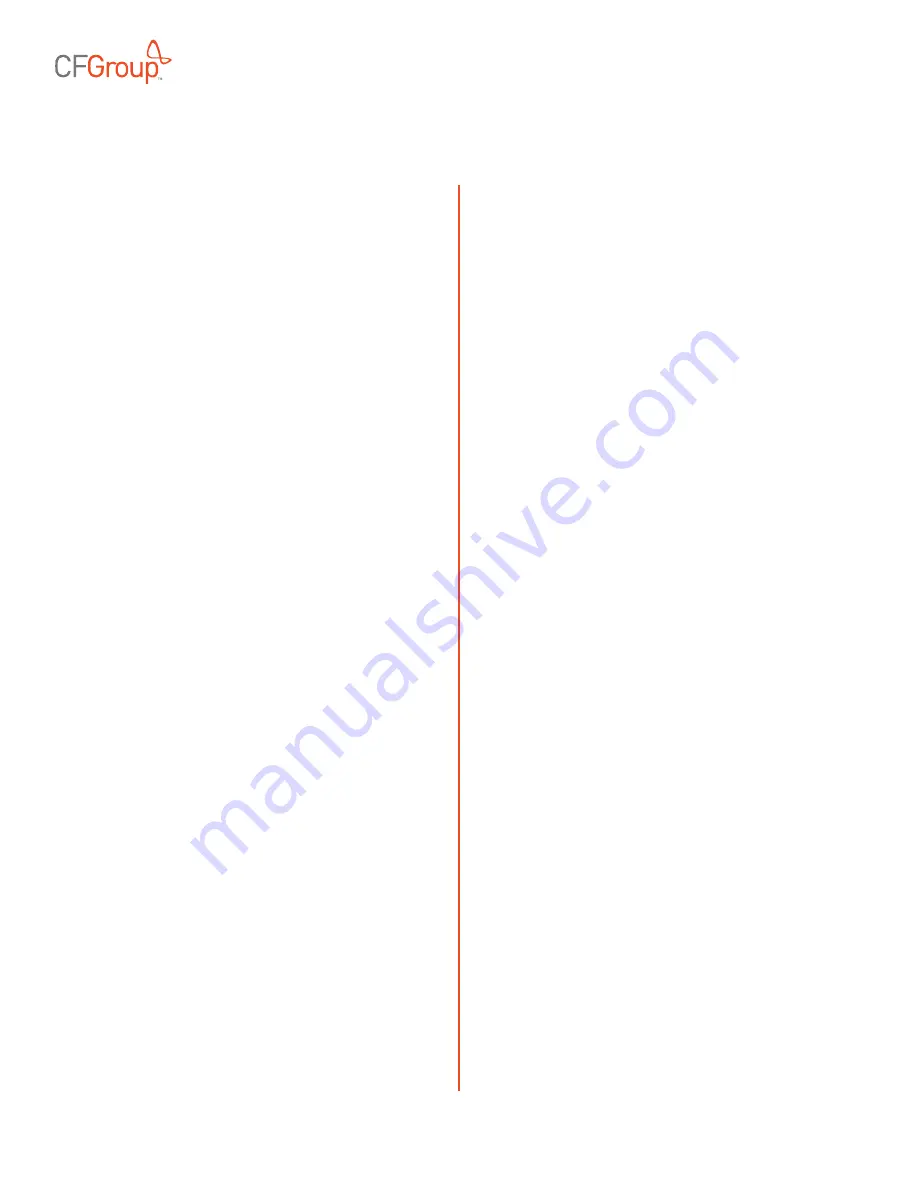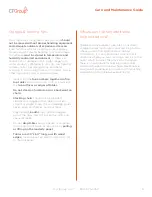
mycfgroup.com
|
800-873-3252
Care and Maintenance Guide
4
What types of maintenance
issues should I look for?
All products in a commercial application should be
visually inspected daily and examined more closely
every 30 days. Remember, the longer the product
has been in service, the more likely it is to have
some maintenance issue and there will be a need for
more frequent checks. Here are some typical wear
and tear items, although this is
not
meant to be an
exhaustive list:
• Loose screws and component parts
• Missing hardware
• Damaged, missing, or worn glides or casters
• Torn, frayed, or excessively worn fabric
• Splintered wood
• Cracked / fatigued welds or joints
• Loose or wobbly joints, legs, or columns
• Cracked or chipped laminate and edges
• Instability or structural failure of parts or the
whole product
• Unable to use for normal purposes
• Failure of mechanisms and build up of waste
around the mechanism
Any product showing signs of structural failure or
abuse should be taken out of service immediately
to prevent complete failure or personal injury. Most
early stage deterioration of parts or products
is apparent to users and staff, who should be
encouraged to report any item which they feel is
unserviceable or which shows signs of wear and tear
or abuse, as this can be a precursor to failure.
What are the issues which
require immediate repair?
We highly recommend
professional service for all
structural repairs or repairs which may require
specialized tools, materials, and equipment. If
you have any concerns about a product, please
immediately remove it from service.
Some
facilities have maintenance crews who can tackle
tasks of varying degrees of difficulty and here are
some examples;
•
Protruding nails, screws, and fasteners
should
be removed or replaced and
wood splinters
should be cut off, sanded smooth, and refinished
to avoid tears and lacerations
•
Locking pins, screws, bolts, and fasteners
should be periodically tightened, taking care not
to over tighten or strip out the threads.
•
Lubricate all swivels and mechanisms;
avoid
putting grease or oil on materials other than the
relevant parts. Take special care to prevent oil
or grease spreading onto plastic components,
fabric, laminates, and wood materials.
•
Replace missing screws, bolts, fasteners, nails,
glides, and casters
to prevent instability or
damage to floors.
•
Repair cracked or broken welds, loose rails,
stretchers, joints, seat pads, cracked or
chipped laminates, edges, feet, etc.
•
Columns
must be seated properly on the
hub of the base.






















